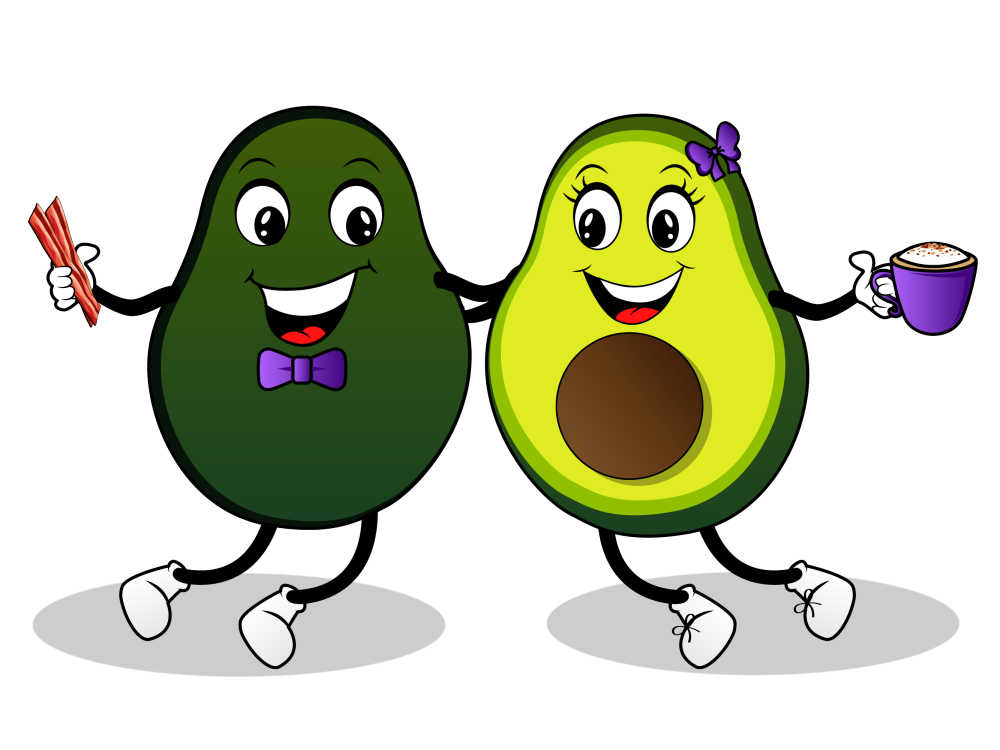
Share on social media
Share on facebook
Share on google
Share on twitter
Share on pinterest
Share on reddit
Share on email
Share on print
When it comes to the keto diet, one of the most important things you need to do is keep your electrolytes in balance. On the ketogenic diet, you’re severely reducing the amount of carbohydrates you consume, which means your body produces less insulin and empties your glycogen stores. Glycogen is comprised of approximately 65% water. So when your body begins to dump the glycogen, you excrete a lot of water. In the beginning stages of your keto journey that’s awesome, because you lose a lot of water weight and it motivates you to keep going. The problem is that along with getting rid of your glycogen and excess water, you’re losing essential vitamins and minerals known as electrolytes. When your electrolytes get low, you run the risk of dehydration, abnormal heart rhythms, muscles weakness, spasms, cramps, fatigue, brain fog, headaches and more. This is sometimes referred to as the Keto Flu.
There are 3 main electrolytes you need to pay attention to on the keto diet; Sodium, Potassium, and Magnesium.
Sodium is the most important electrolyte to stay on top of, but it’s also the easiest one to supplement. On average you need to consume between 4,000-5,000 milligrams a day of sodium. To make sure you’re getting enough, all you need to do is use salt with all your meals. Make sure, however, that you’re using a good quality mineral salt. We prefer Redmond Real Salt since it’s full of minerals and it’s mined right here in the United States. If you can’t get Redmond Real Salt, use a good quality Pink Himalayan salt, (and I don’t mean the bottles you pick up at the Dollar Tree.) There are several mines in the Himalayas, so you want to make sure you’re getting better quality. Get it from your local health food store like Whole Foods or you can pick up this one from Amazon.
Some symptoms indicating you’re low on sodium include:
- Fatigue
- Headaches
- Weakness
- Difficulty concentrating
Next up is Potassium. Potassium is very important for your heart and blood pressure. It also regulates muscles contractions and nerve signals. If you’re experiencing muscle cramps and twitches, heart palpations or an increased awareness of your heart beat, you’re probably low on potassium. You should be eating or supplementing approximately 4,500 mg a day of potassium. There are several foods on the keto diet you can eat to help get your potassium in and they include:
- Kale
- Spinach
- Salmon
- Avocados
- Brussels Sprouts
- Artichokes
- Hemp Seeds
- Broccoli
Magnesium has several functions in the body including aiding sleep, food metabolism, transmission of nerve signals, hormone regulation and the production of energy. If you’re experiencing muscle cramps and twitches at night, you may be deficient in magnesium. Most of the magnesium-rich foods are not conducive to a low carb lifestyle since they’re usually found in dairy products, whole grains, fruit and beans. Magnesium is a little harder to supplement with food on the ketogenic diet. You can get magnesium in leafy greens like kale and spinach, but you might want to consider supplementing your magnesium with a product like CALM. Be careful though: high doses of magnesium can cause what Rachel likes to call, “bathroom pyrotechnics.”
Supplements
Like we said, although you can easily get your daily amount of sodium in by using Redmond Real Salt, it’s a little more difficult when it comes to the potassium and magnesium. That’s where electrolyte supplements come into play. Over the last two and a half years, we’ve tried a lot of supplements to try to get in our potassium and magnesium. Some of them were great and some of them didn’t seem to help at all. Since both Rachel and I can be a little nerdy, and we’re both very frugal, I decided to compare some of the most popular electrolyte supplements and see which ones have the most value and which ones we should avoid.
I’m going to warn you now, this part is a little geeky but the results surprised me. When we first got Tabitha, we wanted to make sure we were feeding her a good, healthy diet. After all, we’re avoiding grains and fillers while trying to eat healthy, so shouldn’t we do the same for our pet? I started to look at all the top brands of dog food on the market and quickly realized it’s going to be expensive to feed a dog that was going to be 100 pounds when fully grown. After realizing that, I started to compare all the different foods, not just by cost but by ingredients, calories, amount that she’d need to eat per day, cost per meal and cost per day. I was shocked when I figured out that it was not only healthier to feed her a dog food that cost $90 for a 26 pound bag, but it was also cheaper in the long run. It was actually going to cost almost double the amount to feed her the Walmart brand of dog food that was only $15 a bag, than it was to use the Orijen brand we chose. Because with the cheap brands, she was going to need to eat 6-8 cups a day verses the 2-3 cups she needs with the better foods without fillers. Thats not even taking into account the fact that she won’t have to go to the vet as often. Does this sound familiar? It’s the same with our diet. Though our foods may cost a little more, we need less to stay healthy and we’re not spending money on doctors and medication. Anyway, that’s where I got the idea for this blog. So let’s take a look at the different products we’re going to compare. They are:
- Ultima Replenisher
- Keto Vitals
- Dr Bergs Electrolyte powder
- Zip Fizz
- Gatorade Zero
- Powerade Zero
- Keto Chow Electrolytes
- (and for fun,) Pedialyte and Gatorade with sugar
I decided to focus on the factors that are important to me: how much of each electrolyte is in a serving, what it’s sweetened with, how many carbs are in a serving and how much does it cost per container & per serving. My hope was that by breaking down each electrolyte supplement, I’d be able to make an educated decision on best product. Below you will see the results.

After breaking down each supplement based on a serving, I was still confused. At least with this chart I can see how much I’m spending on a serving and how much of each electrolyte I get, but it didn’t answer my overall question of which one has the best value. By looking at the chart, you see that the Keto Chow electrolytes are only 18 cents a serving. But a serving only has 130 milligrams of potassium. When you compare that to Dr Berg’s electrolytes, one might think that Dr. Berg’s is the best value. I decided to take my investigation one step further by figuring out how much of each supplement I would need to take to equal the potassium in Dr. Berg’s electrolytes or a Zip Fizz since they both provide a significant amount. In the chart below you, will see how many servings of each supplement you need to take to get close to 1000 milligrams of potassium. It also shows how much magnesium & sodium you end up with by consuming that amount of each product. Finally, the chart shows how many carbs you would consume and how much you would pay to get 1000 mg of potassium. The results shocked me.

Breaking down the different electrolyte products like this really helped me to make a decision as to what the best electrolyte supplement to take is based on cost and amount of electrolytes you get. As you can see from the above table, although Dr. Berg’s electrolytes are the cheapest for 1000 mg of potassium, you are getting hardly any sodium and only about 25% to 30% of the magnesium you need in a day. When you compare that to the Keto Chow drops, it ends up not being a great value. Based on this breakdown, I was able to determine that the best value is the Keto Chow drops, followed by Keto Vitals. Though the Keto Chow drops cost about 40 cents more than the Keto vitals, you’re getting significantly more sodium. And in my opinion, it’s the most well-rounded supplement. To top it off, there are no sweeteners or chemicals.
Even though the Keto Chow drops are the most well-rounded, I will still use zip fizz occasionally. Lets face it, Zip Fizz tastes amazing and it gives you a little boost of energy due to all the Vitamin B in contains. On the flip side I wouldn’t drink more than one a day because of the high amount of vitamin B and the carbs, and I certainly wouldn’t give it to children.
Speaking of children, take a look at the Gatorade and Powderade numbers. To get close to 1000 mg of potassium, you need to drink over 2 gallons of it and you end up consuming 22 – 28 carbs. We feed our kids these sports drinks because we think they’re helping, But basically it’s just Koolaid with added salt. After seeing those numbers, I thought it would be fun to take a look at some other ways people get electrolytes, both on keto and with the Standard American Diet. Take a look:

Looking at these other sources is kind of frightening. When I’m on the sports field, I see a lot of parents, coaches and trainers pushing bananas and Gatorade on the kids. But look how many carbs they’re consuming in the process. The chart doesn’t show this, but 228 ounces of Gatorade contains approximately 364 grams of sugar. Just one 32 ounce bottle has almost double the amount of sugar a child should consume in a day. People say that we need to get our kids off Coca-Cola but there’s more sugar in the Gatorade.
Now the purpose of this blog was not to tell you that you’re taking the wrong supplements or that you need to switch to Keto Chow drops. I started investigating this for my own knowedge after Keto Chow released their new single serve electrolytes and I wanted to see if it was a good value. For me, it was kind of eye opening, especially when it comes to the sports drinks that so many of us consume. Hopefully this was a help to you as well

